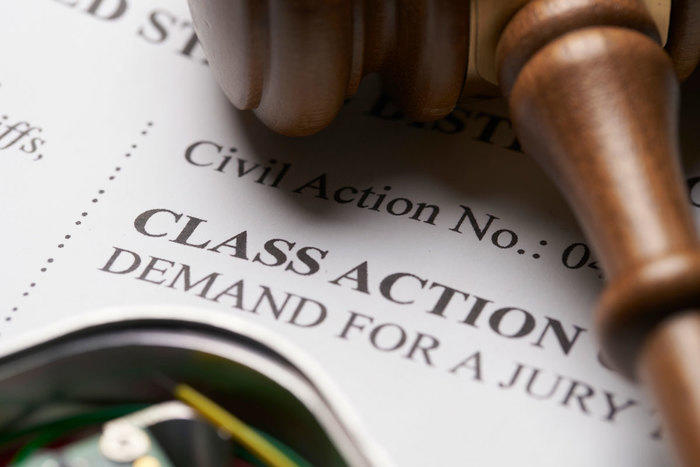Collective Justice: The Power and Process of Class Action Lawsuit Claims
Collective Justice: The Power and Process of Class Action Lawsuit Claims
Blog Article
Understanding Class Activity Claim: A Guide for Attorney
Course activity legal actions have actually come to be an integral component of the legal landscape, enabling the loan consolidation of several insurance claims into a solitary activity. For attorneys, comprehending the complexities of class action lawsuits is vital in efficiently representing their customers. This comprehensive overview discovers the basics of class activity suits, from recognizing potential class participants to browsing the certification procedure. Furthermore, it looks into vital techniques for taking care of course action litigation and supplies insights into working out and obtaining authorization for settlements. By delving into the intricacies of course activity suits, this overview outfits lawyers with the expertise and devices needed to successfully browse this intricate area of law.
The Fundamentals of Course Activity Claims
Class action legal actions are a lawful system used to combine comparable claims from a group of individuals right into a single claim, providing a effective and cost-efficient technique to looking for justice and resolution. This kind of suit permits a representative plaintiff, acting on part of the whole course, to bring a case versus an accused that has apparently created harm or breached the civil liberties of several people.
The basic needs for bringing a course activity suit consist of numerosity, commonality, typicality, and adequacy of representation. Numerosity refers to the fact that the course must be so huge that joinder of all members would certainly be impractical. Commonness means that there must be typical questions of regulation or reality that are shared by all members of the class. Typicality needs that the insurance claims of the depictive plaintiff are common of the insurance claims of the entire class. Last but not least, competence of depiction ensures that the representative complainant will appropriately represent the passions of the whole course.
Class action claims can be advantageous for both plaintiffs and defendants. For plaintiffs, it enables them to merge their sources and share the prices and dangers related to lawsuits. It additionally offers a degree having fun area when they are up against huge firms or entities. For defendants, it provides the opportunity to successfully solve several claims in a solitary lawsuit, preventing the demand to prevent many specific lawsuits.
Identifying and Assessing Potential Class Participants
After developing the standard demands for a course action lawsuit, the following action is to identify and examine potential course members. This procedure includes identifying that might be component of the class and assessing their claims to figure out if they fulfill the required requirements.
To identify potential class members, lawyers normally carry out considerable research and gather pertinent info. This may involve assessing documents, carrying out meetings, and checking out records to determine people or entities that might have been influenced by the supposed wrongdoing. It is critical to establish a clear and extensive listing of prospective class participants to guarantee that all influenced parties are consisted of in the lawsuit.
As soon as potential course participants have been identified, the next step is to examine their insurance claims. This entails evaluating the merits of each specific insurance claim to identify if they satisfy the legal requirements for class accreditation. Lawyers have to thoroughly analyze the realities, proof, and lawful theories of each potential class participant's insurance claim to ensure that they have a practical situation.
Analyzing possible course participants also includes establishing whether they satisfy the class meaning and have endured comparable injury as a result of the defendant's actions. This requires contrasting the truths and circumstances of each prospective course participant's situation to the accusations and lawful concepts put forth in the legal action.
Browsing the Class Certification Process
To successfully navigate the class certification process, attorneys must faithfully abide by the procedural demands stated by the court. Course accreditation is a critical action in a course activity suit, as it establishes whether an instance can continue as a course action, representing a group of individuals who have comparable claims against an accused. The procedure involves satisfying certain requirements, such as numerosity, commonality, typicality, and adequacy of representation.
To start with, lawyers have to establish numerosity by demonstrating that the class is so large that individual joinder is unwise. This can be achieved with proof or specialist testimony. They should establish commonality by showing that there are typical questions of regulation or reality that predominate over specific problems. This calls for an extensive analysis of the insurance claims and defenses involved.
Following, legal representatives need to reveal typicality, which means that the depictive complainant's claims are normal of the claims of the course participants. This ensures that the passions of the depictive complainant straighten with the rate of interests of the course. Last but not least, lawyers need to show adequacy of depiction, suggesting that the depictive complainant and their guidance will rather and properly stand for the rate of interests of the course.
To browse this process effectively, legal representatives should extensively prepare by conducting substantial research, gathering proof, and creating a compelling disagreement that pleases each of these criteria. They need to also be prepared to reply to straight from the source any kind of objections Get More Information or challenges raised by the defendant. By faithfully sticking to the procedural demands established forth by the court, legal representatives can boost their opportunities of acquiring course qualification and progressing the rate of interests of the class members.

Key Techniques for Handling Class Activity Litigation
Upon efficiently navigating the course accreditation procedure, lawyers have to after that execute key approaches for successfully taking care of class activity litigation. These strategies are important to make sure that the instance proceeds smoothly and efficiently, eventually optimizing the opportunities of a favorable outcome for the course members.
One key approach is to establish a strong and natural lawful team (Class action lawsuit). This involves assembling a group of lawyers with proficiency in class action litigation, as well as various other appropriate areas such as the particular sector or subject matter associated with the situation. A versatile team can bring various perspectives and skills to the table, enhancing the overall efficiency of the lawsuits
One more vital method is to establish a well-balanced and extensive lawsuits strategy. This strategy ought to lay out the total purposes of the case, along with the particular lawful concepts and debates that will be pursued. It must additionally include a timeline and budget to make sure that the situation remains on track and within the allocated sources.
Furthermore, attorneys ought to actively involve with the course members throughout the lawsuits process (Class action lawsuit). This consists of offering normal updates on the progression of the instance, looking for input and comments from the class participants, and dealing with any type of concerns or inquiries they may have. By fostering open communication and cooperation, legal representatives can build count on and assistance among the course participants, which can be crucial in accomplishing an effective resolution
Clearing Up Course Activity Lawsuits: Settlement and Authorization
When it concerns clearing up class action legal actions, effective arrangement and obtaining authorization are vital action in accomplishing a resolution. Course action legal actions are complex and include a check here a great deal of plaintiffs, making it critical to reach a negotiation that is reasonable and adequate to all events involved.

When a negotiation arrangement is gotten to, it must be approved by the court. The court's role in this process is to make sure that the negotiation is reasonable, practical, and properly secures the passions of the course participants. The court will certainly take into consideration factors such as the nature of the claims, the strength of the evidence, the potential recovery for the class members, and any objections raised by class members.
Obtaining court approval is essential as it offers finality to the settlement and protects the interests of the class members. It ensures that the settlement is binding and enforceable, and course participants can obtain their rightful settlement.
Final Thought

Class activity claims have come to be an indispensable part of the lawful landscape, enabling for the combination of multiple cases into a solitary action. Class qualification is an important step in a course action legal action, as it identifies whether a case can proceed as a course action, representing a team of individuals that have similar cases against an offender. By vigilantly sticking to the procedural needs set forth by the court, legal representatives can enhance their opportunities of obtaining course certification and advancing the passions of the class members.
The court will think about elements such as the nature of the claims, the stamina of the proof, the potential healing for the course members, and any arguments elevated by class members.
By determining and analyzing potential class participants, legal representatives can determine the feasibility of a course activity lawsuit.
Report this page